Introduction
In the morning of November 6, 1944, a column of civilians set off on the highway stretching westwards from Budapest to Vienna. All of them were Jews, mostly middle-aged and elderly women and men, forcibly mobilised by the Hungarian far-right Arrow Cross government to build fortifications on the eastern frontier of the collapsing Nazi German Reich. The advancing Soviet Red Army had already occupied the larger part of Hungary and launched an offensive to take Budapest. As heavy artillery fire could be heard in the city, only a handful of diehards believed the tide of war could still turn in favour of the Axis powers. This blog post centres on the fate of these forced labourers, dragged mostly from Budapest in November 1944, featuring postcards, diaries and other private documents of victims and survivors as well as post-war testimonies.
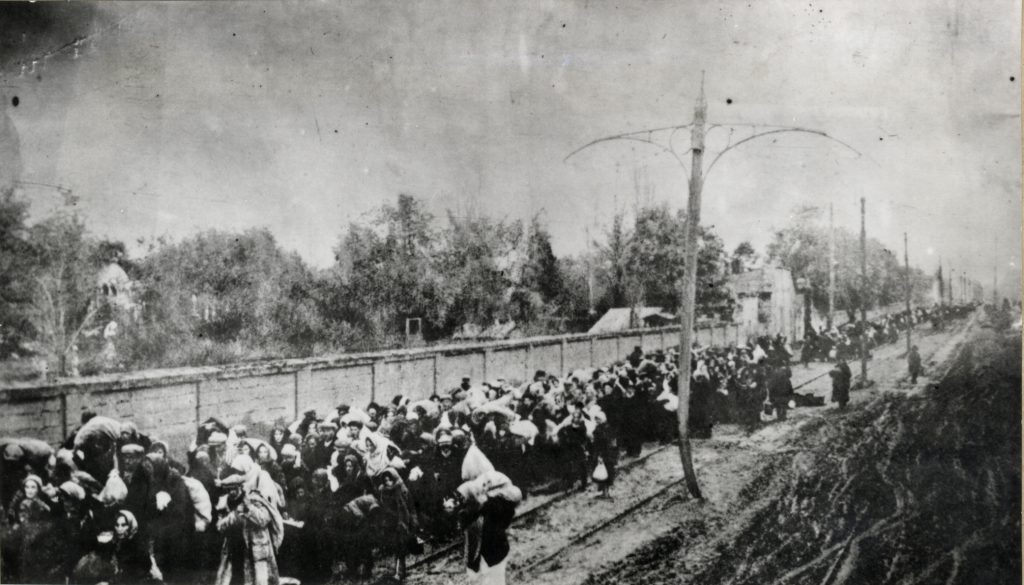
Please follow the links for the collection descriptions in the EHRI portal:
Historical Background
In October, 1944, following the examples of other satellite states, Hungarian political elites also attempted to exit from the war. However, German intelligence and military thwarted the conspiracy. The Arrow Cross Party, backed by German tanks, overthrew Regent Miklós Horthy’s government on October 15-16, 1944. Budapest Jews, who barely survived two attempts at deportation to Auschwitz in early July and late August, lived through a relatively peaceful period between late August and October 15. Preparations for a peace treaty led to a more lenient Jewish policy as well. They were justified in their belief that the war and their ordeals would soon end. However, these hopes were dashed by the Arrow Cross coup. The following four months brought about one of the bloodiest sieges in the history of World War II and a last wave of sufferings for the Jews of Budapest.
For details about the Arrow Cross Party, its rule, and its ideology, see Murdered on the Verge of Survival: Massacres in the Last Days of the Siege of Budapest, 1945 Part II
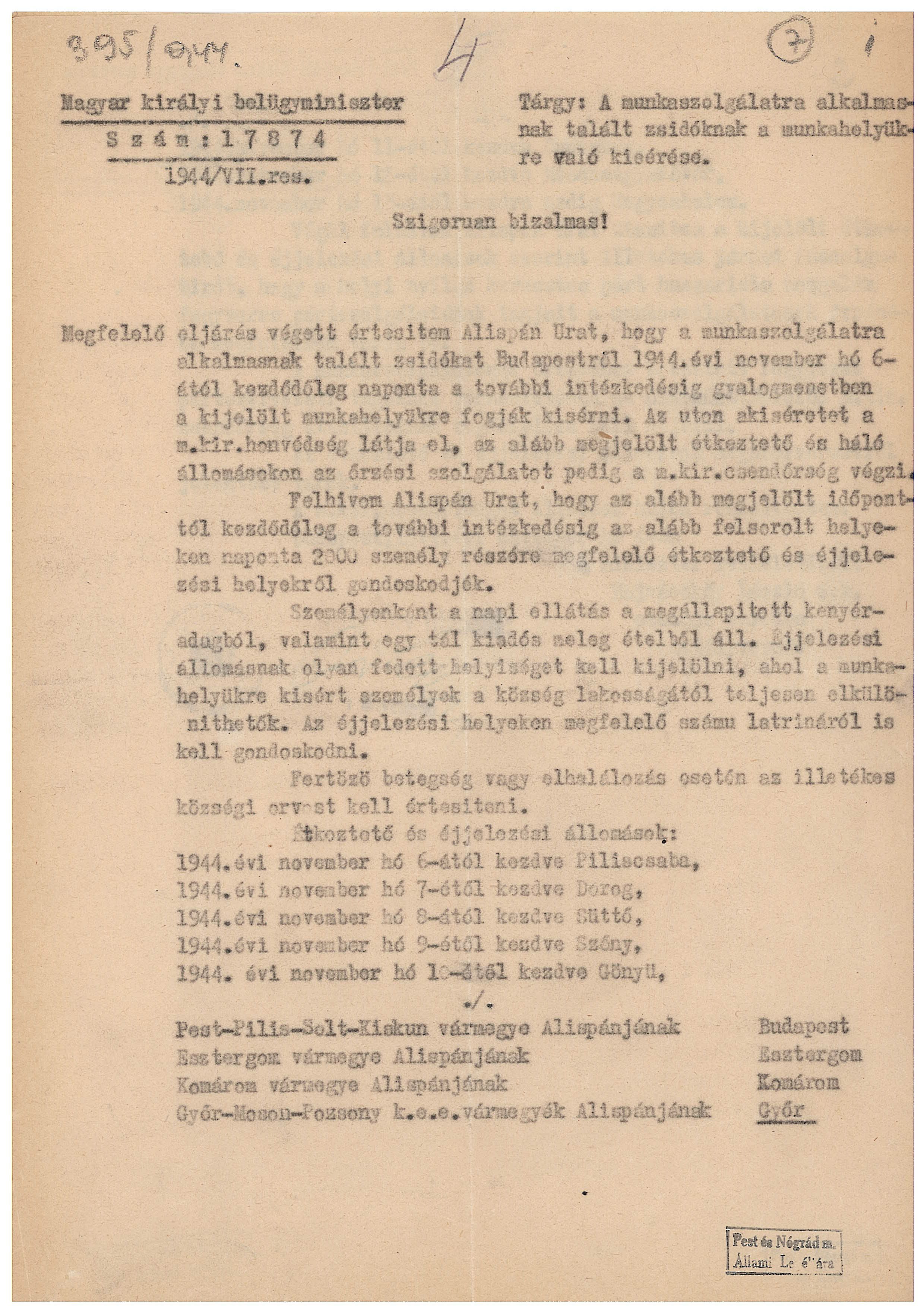
On October 17, Adolf Eichmann, the architect of the deportations from the provinces which had taken place during the summer, returned to Hungary. Initially, it seemed that he would be able to complete his genocidal project in Hungary and deport the Budapest community as well. To be sure, Ferenc Szálasi and his government were committed to fight on the side of the Axis powers until the very end. They envisioned their country without Jews, whom they regarded as expendables in the joint war effort. They agreed to hand over 50,000 Jewish workers to the Nazis. This number included about 15,000 labour servicemen serving in the Hungarian army, as well as 25,000 men and 10,000 women rounded up from the yellow star houses. Firstly, the Jews were deployed to build anti-tank ditches in the vicinity of Budapest. Already in this phase, many of them succumbed to hard labour and the brutality of Arrow Cross guards. However, this was only the beginning of their suffering. On November 2, with the Soviets approaching, the labour detachments had to be withdrawn. From November 6 onwards, tens of thousands were deported to the Reich, mostly on forced marches, due to the shortage of transportation facilities.
Similarly to the mass deportations from the provinces in the summer of 1944, the deportation was hastily organised, without any regard to the safety and well-being of those deported. The architects of the action calculated that eight night stops would be sufficient for the 170 km (106 miles) long journey, by conservative estimates, from Budapest to the western border. Deportees were supposed to walk in transports of 2000-4000 people, covering 20-25 kilometres (12,5-15,5 miles) a day. This would have been bearable for able-bodied persons under normal circumstances. However, many of them lacked proper clothing, equipment, sometimes even shoes. The marchers also included physically unfit, underage, sick and elderly people. Food and water supply was scarce, and accommodation was abysmal. All of this was made worse by the harsh weather conditions. Those who attempted to escape or lagged behind were mercilessly beaten or shot.
Channels of Rescue and Information
Unlike what had transpired during the summer, a large-scale rescue effort was almost immediately mobilised for the deportees. Diplomats of neutral countries, Zionist activists, as well as thousands of family members, friends and their helpers were trying hard to lift as many people as possible out of the marching lines based on various pretexts. Cars and bicycles hit the road carrying messages, parcels, and real or forged protective documents.
The Arrow Cross government, eager to consolidate its rule and gain international recognition, was inclined to accept international protection and intervention on behalf of the deportees. The Papal Nuncio and the Budapest delegates of the neutral states (primarily Switzerland and Sweden) protested against the fact that deportations had started up yet again, and spoke out against the brutal way it was executed. Having received a sternly-worded joint letter from diplomats on November 17, Szálasi decided to make concessions, and he attempted to develop a framework for a more moderate Jewish policy based on differentiated categories. Deportees were considered “Jews on loan” (Leihjuden), who were handed over individually, and Hungarian authorities, at least theoretically, aimed to track their whereabouts and circumstances. Then, from November 21 on, Szálasi gradually halted the deportations, to the great disappointment of the Nazis. Instead, he ordered that a central ghetto for the Budapest Jews be created. The ghetto was closed off in early December, signalling the end of deportations. The last transport carrying the captives of the Budapest Gestapo left the city on Christmas Eve, just hours before the Red Army encircled Budapest.
Mitigators and Profiteers
Due to propaganda and stereotyping that depicted Jews as pro-Soviet traitors, many bystanders believed that their deportation was an act of national self-defence. Despite the conditioning people had received for many years, the ruthless treatment and the sufferings of the forced marchers struck a chord with many of them. Testimonies and diplomatic reports recall several cases when solidarity was expressed towards the persecuted, regardless of the risks sympathisers had to face. However, first-hand accounts documented other behavioural patterns as well. Besides gendarmes and Arrow Cross paramilitaries, who routinely robbed and humiliated the victims, some bystanders also seized the opportunity to profit from others’ misfortune. They viciously took advantage of the fatigued marchers, who were ready to barter their very last belongings for a short ride on a horse-drawn wagon, for a piece of bread or for a sip of water. Near Győr, for example, peasants allegedly offered a slice of meat for a wedding ring and a piece of bread for a wristwatch. In another instance, hostile locals beat up a man, who offered the Jews bread out of pity.
Stations of the Ordeal
The annotation of the document was made possible by Neatline (an Omeka plugin). Some of the historical borders used here were adapted from the Spatial History Project.
Climate data displayed on the map cover the period November 6 to 15, 1944, and are culled from the historical data series of the Budapest and Szombathely stations (Hungarian Meteorological Service).
For general climate changes in the region in November 1944, see the radar maps and data of Wetterzentrale.
Óbuda: „We walked in an awful terror”

The major collection site for deportees was the empty sheds of the Nagybátony-Újlak Brick Factory in District III of Budapest (Óbuda) on both sides of Bécsi Road, following the example set during the summer deportations. Thousands were crammed into the sheds without even rudimentary facilities. Arrow Cross militiamen brutalised their victims and stripped them of their valuables. Due to anxiety and despair, several people committed suicide.
Piliscsaba: „Convinced with rifle butts”
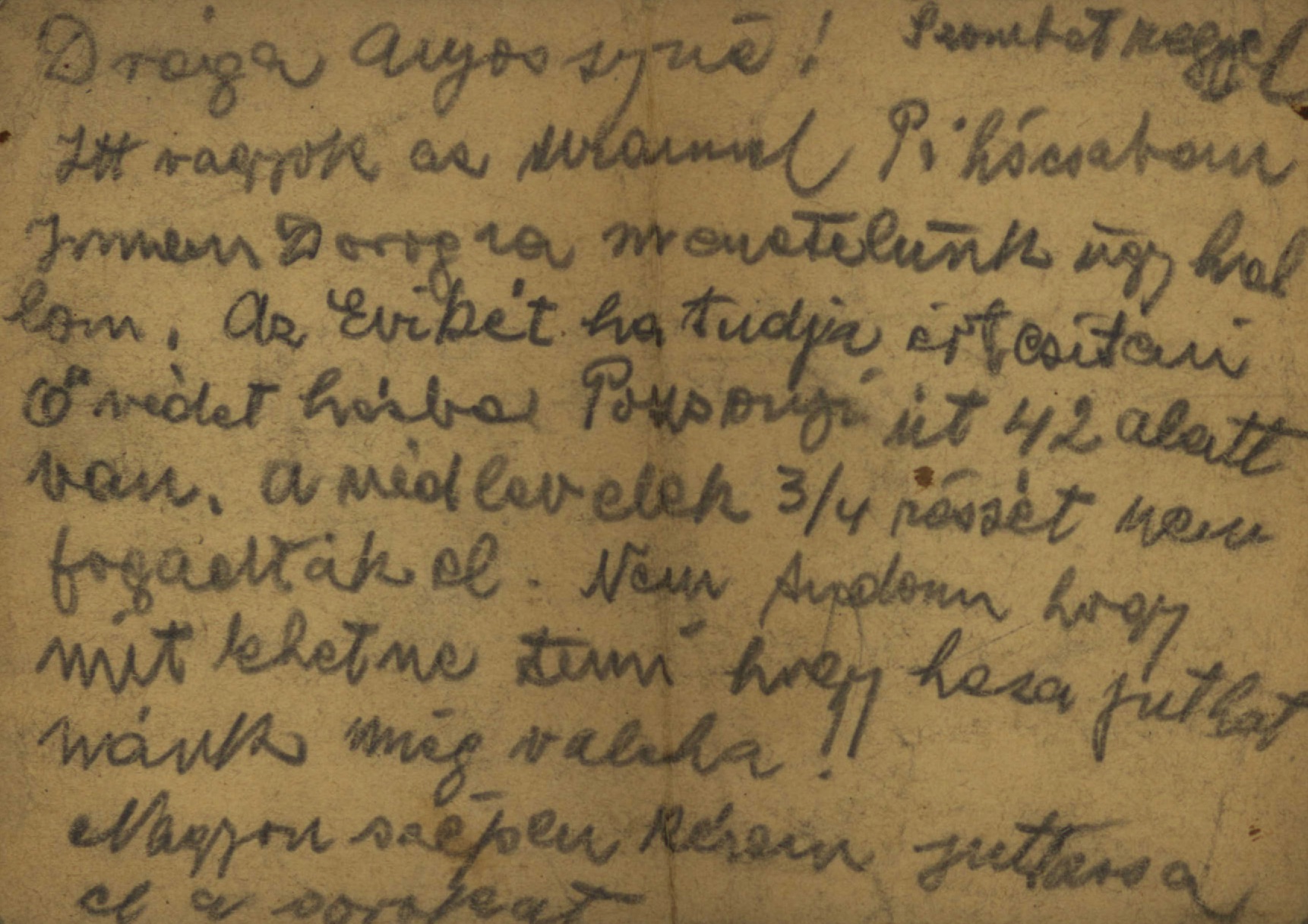
The first transport departed from Óbuda on November 6 and arrived in Piliscsaba in the evening hours. Gendarmes took over; they brutally forced the Jews into newly erected buildings (hutments) of the local military barracks. 70-80 people in one room, most of them spent the night on the bare floor. They got some bread only in the morning.
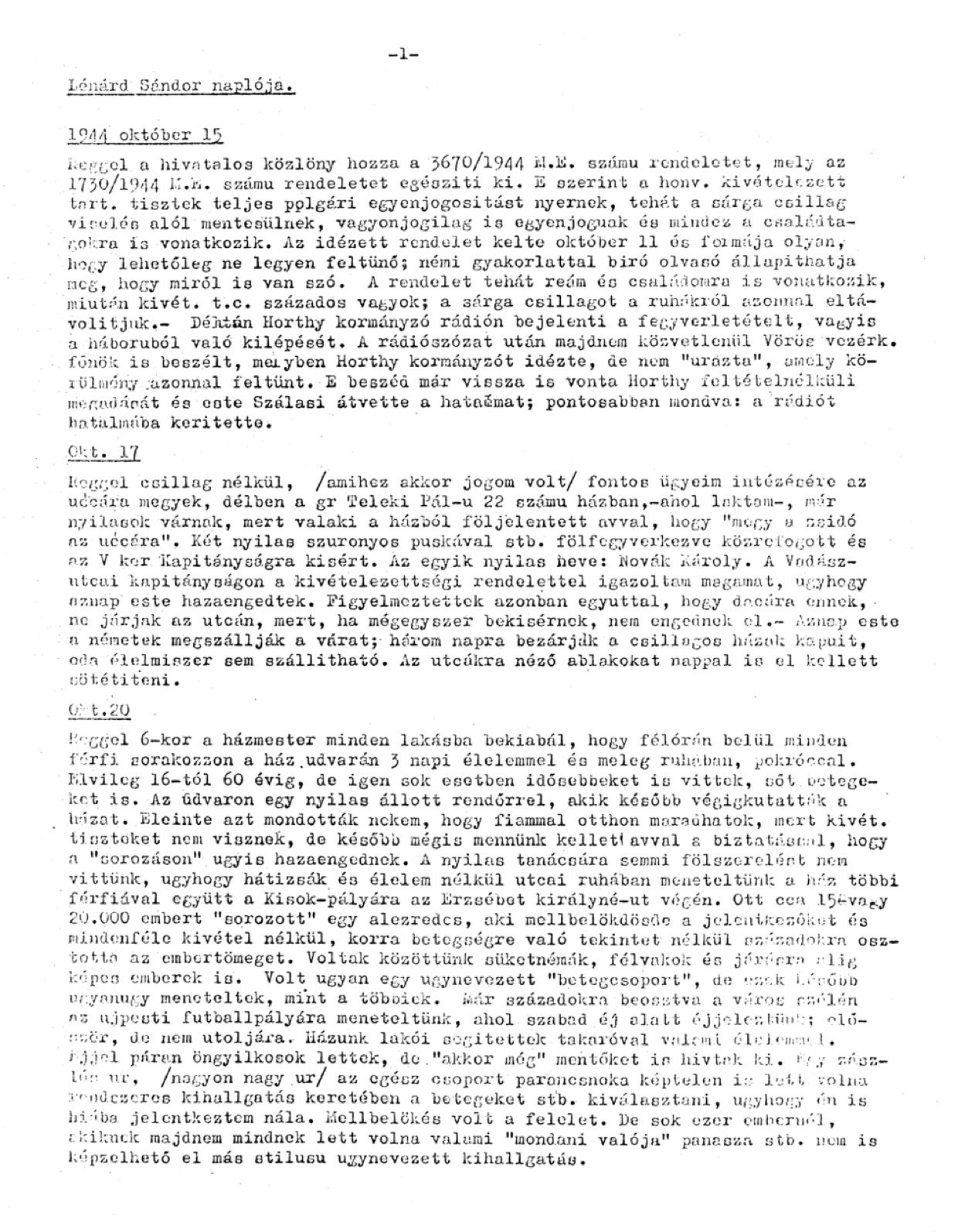
Dorog: “So geschicht es den Pester Juden recht!”
The first columns of the exhausted marchers arrived in the mining town of Dorog at night on November 7. Gendarmes forced them to spend the night under the open sky on the tribune and the muddy field of the football stadium. It was against the decree of the Minister of the Interior issued on November 4, which stated that “covered premises should be designated for night stations”. According to one survivor, “people were crying, yelling and tearing their hair, and many went mad because of the idea of spending this horrible night in the open.” The situation turned from bad to worse for the groups who departed later on, due to the change of weather.
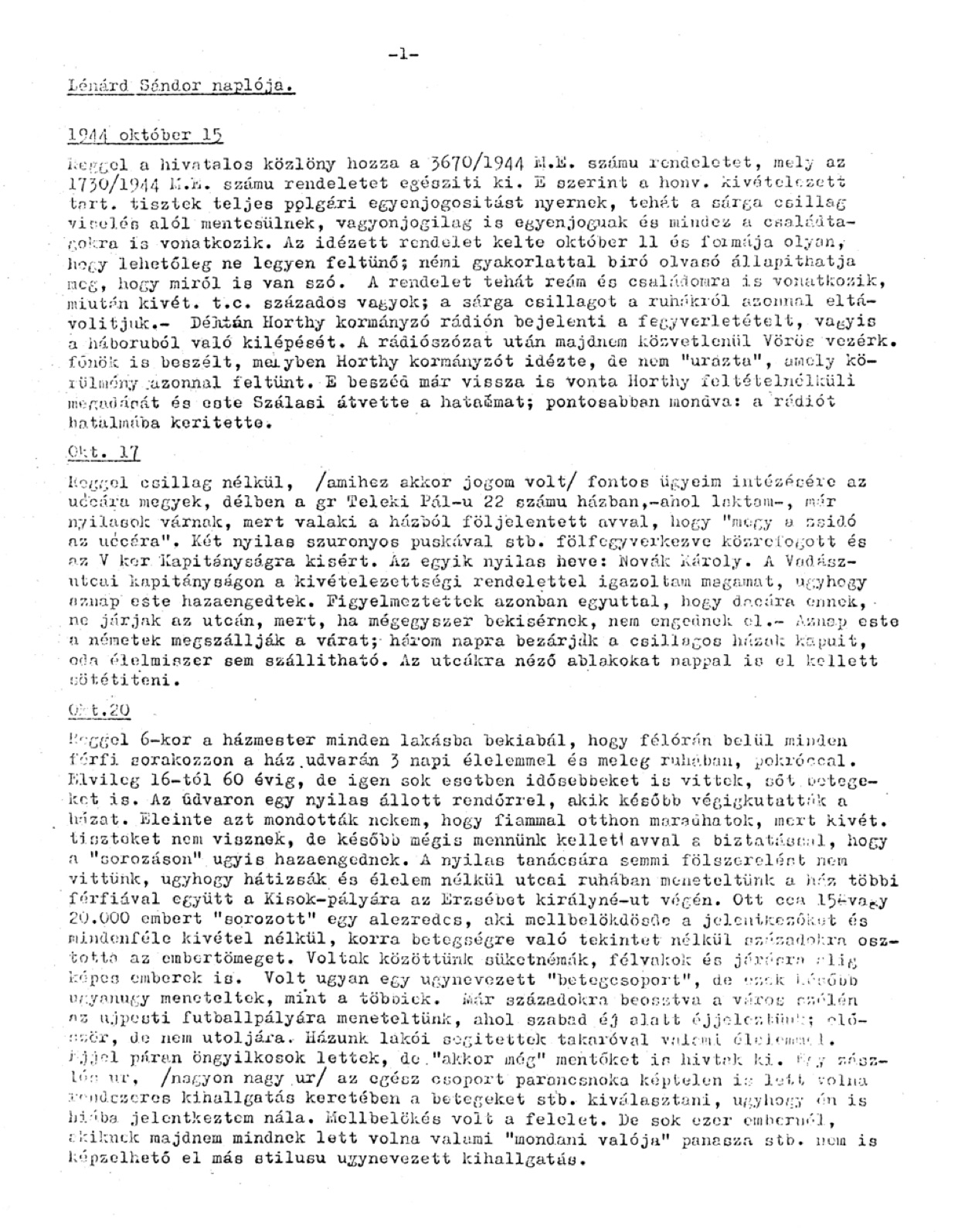
Süttő: “Sitting in heavy rainfall without cover the whole night”
The first transport departed from Budapest in relatively calm and sunny weather. However, around November 8 a cold weather front arrived, with considerable amount of precipitation. The first column arrived in Süttő at night on November 8 in pouring rain. They were placed in the fairground of the village, an empty field contaminated by excrement and no facilities whatsoever. People could hardly sleep due to the cold and rain. There was no cover, except for some makeshift tents. It was the first site where a considerable amount of elderly and sick people died.
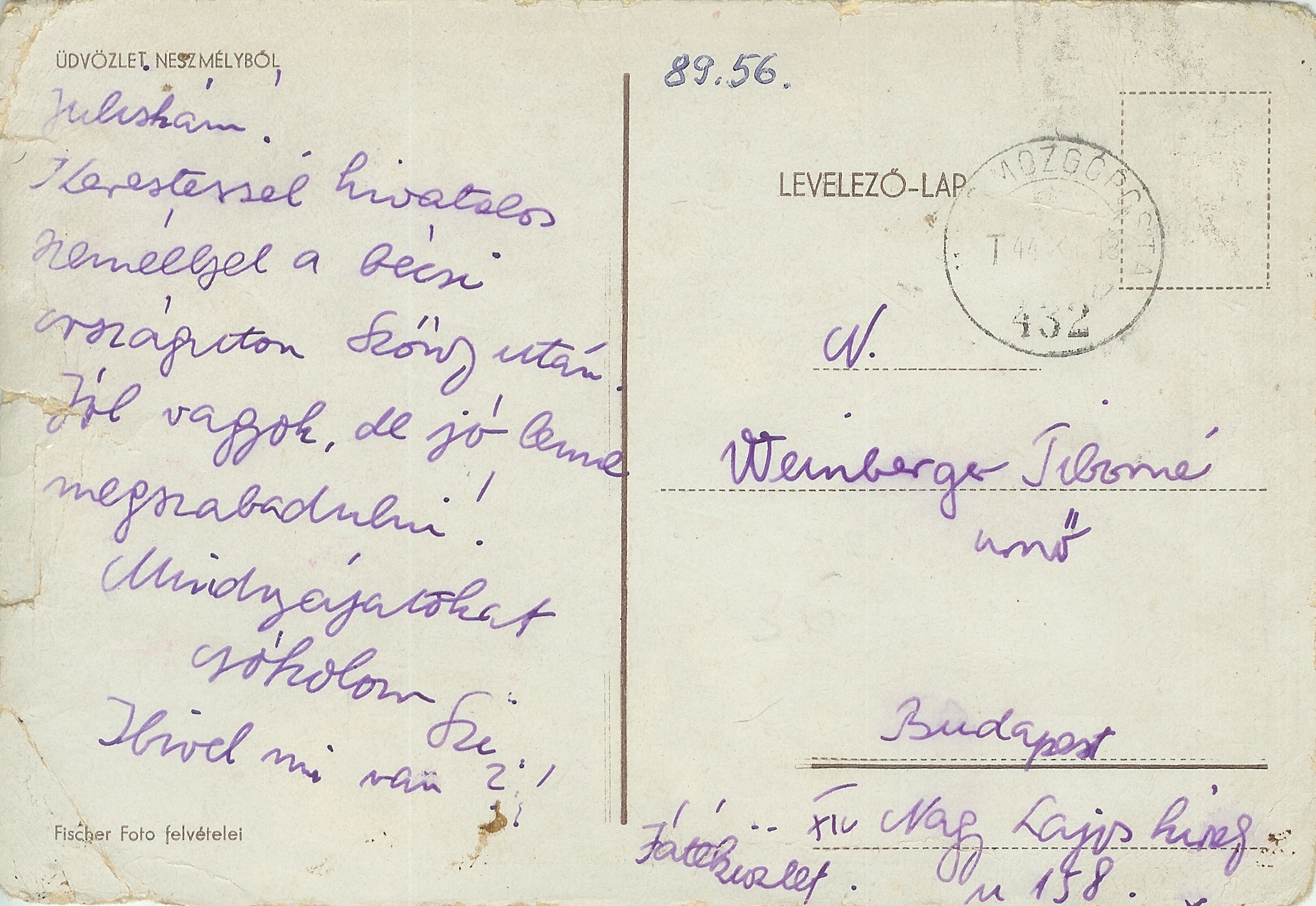
Szőny: “Among the cows, at least we were warm”
According to most of the testimonies, in Szőny, a village near Komárom/Komárno the treatment was relatively more lenient and the marchers finally got a warm meal. They were accommodated in stables, which provided at least warmth and cover, although it was crowded.
Gönyű: “We were lying on the top of each other, like rats…”
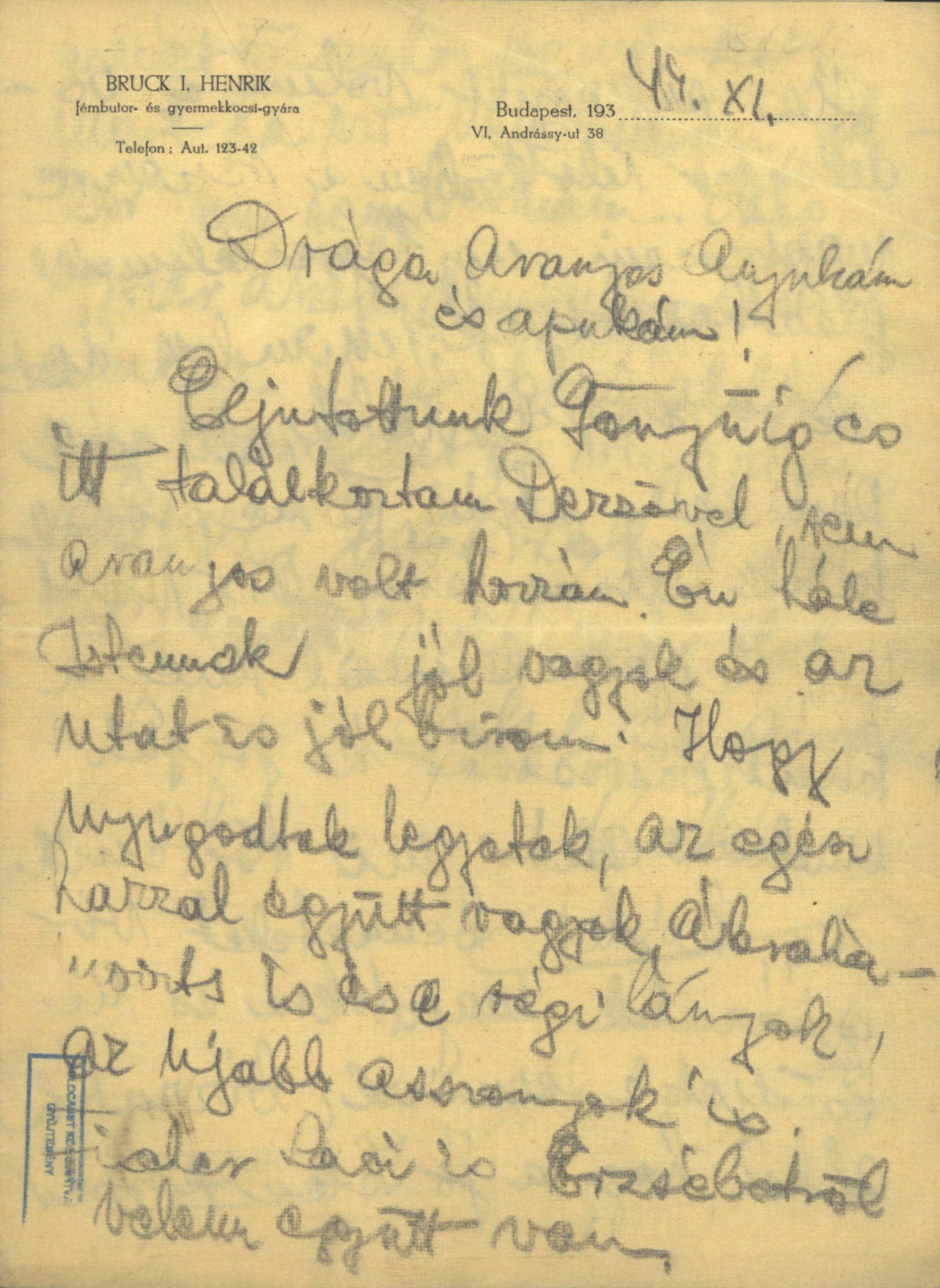
Arriving at the port in Gönyü from November 10 on, the deportees were crammed into barges on the Danube, trying to rest in the damp, cold bottom of vessels with metal walls. Some food was provided only in the morning, and the place lacked any sanitation facilities. Over-exhausted marchers left many of their belongings behind, as they were unable to carry them on any more. Those who could not walk any longer, as well as the sick, were left on the barges, where most of them perished.
Dunaszeg: “Seven people in one pigsty”
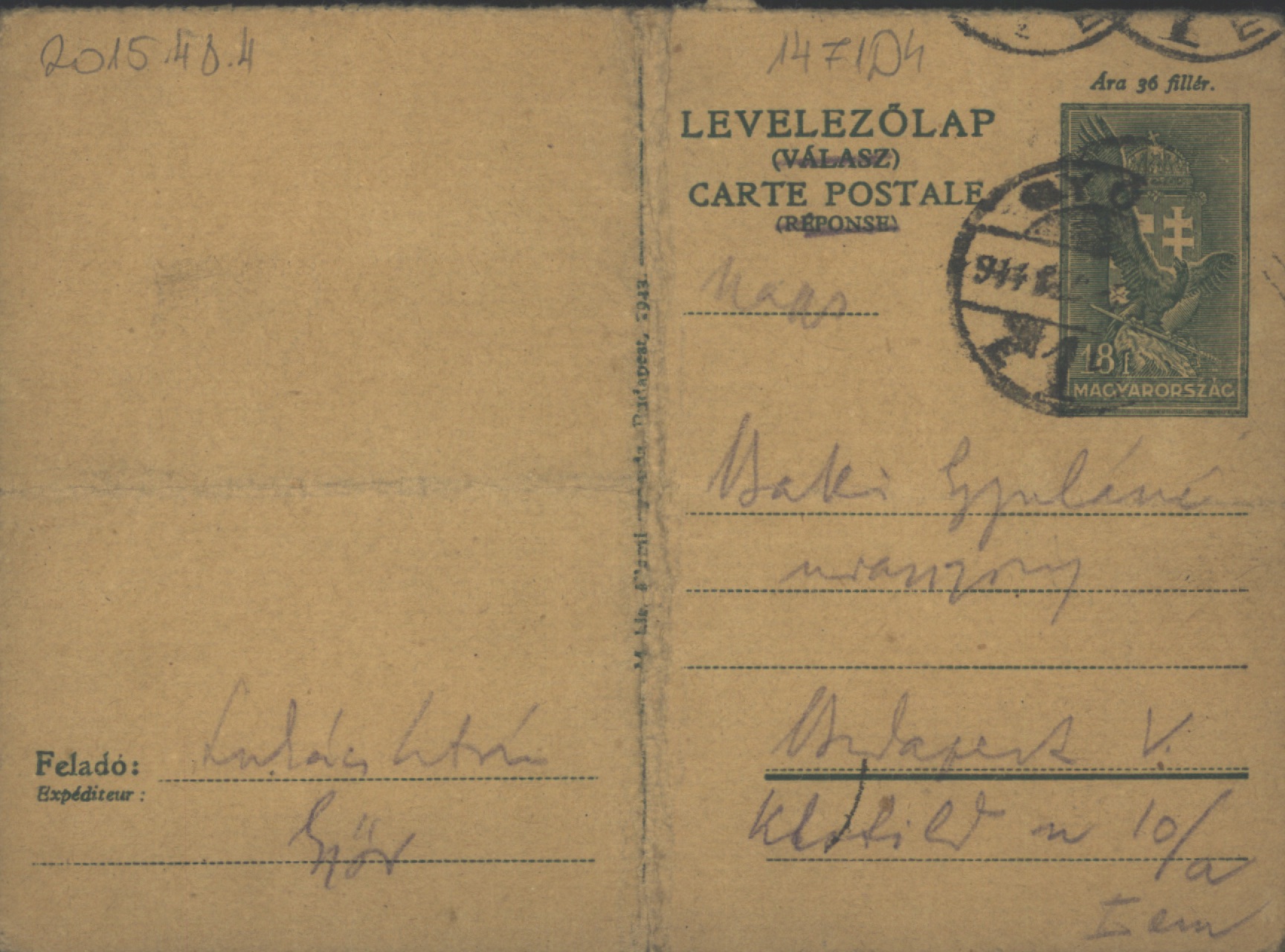
The march continued, crossing the city of Győr. By this time the deportees had already been totally exhausted and famished. It was even harder to keep up on the roads made muddy due to heavy rainfall in the previous days. Many of them died of diarrhoea, were frozen to death or killed by the gendarmes or Arrow Cross guards. In Dunaszeg pigsties were assigned to accommodate the deportees. Other groups of forced marchers were taken forward to the neighbouring village, Ásványráró, where they were housed in the stables of the Károly manor. Further transports took alternative routes upon leaving Győr, crossing the villages of Abda, Öttevény, Mosonszentmiklós and Lébény.
Mosonmagyaróvár: “In a bombed-out factory hall, under the open sky”
Most of the survivors had only dim recollections of this town, given the state of total mental and physical exhaustion. Guards crammed them into the buildings of the bauxite factory severely damaged by air raids as well as into nearby barns. The factory was the first site during the road where running water was available and deportees could properly wash.
Hegyeshalom: “We thought we got to a splendid place”
At the border station of Hegyeshalom, the incoming deportees were housed in barns and sheds on straw bedding. Upon the intervention of foreign diplomats, they were lined up and those holding protective documents were taken out the transports and returned to Budapest. The rest were handed over to German agencies (SS, SA, Organisation Todt) in the no man’s land who took them to Zurány/Zürndorf. At first, it seemed the conditions significantly improved. The marchers could rest and got substantial amounts of food. However, another round of hardships followed.
Last Letters
Many deportees could send messages home, thanks to rescuers and messengers, and to the help of strangers who mailed hastily written postcards or letters thrown from the trains or on the forced marches. These messages asking for help, sending prayers, or expressing concern about the fate of loved ones quite often became the last sign of life from a relative. The largest Hungarian collections of these farewell letters can be found in the Hungarian Jewish Archives and the Holocaust Memorial Center, thanks to individual artefact donations.
Extreme suffering occasionally produced ground-breaking art. The most well-known example from Hungary is the so-called “Bor Notebook”, which contains the last poems of Miklós Radnóti, one of the most talented figures of modern Hungarian literature, found in a mass grave near Abda. For details about Radnóti and his last poems, see: http://radnoti.mtak.hu/en/04.htm. Most of the victims did not leave any written accounts. However, one can find the traces of them in archival records, family photo albums or stories of survivors.
Epilogue
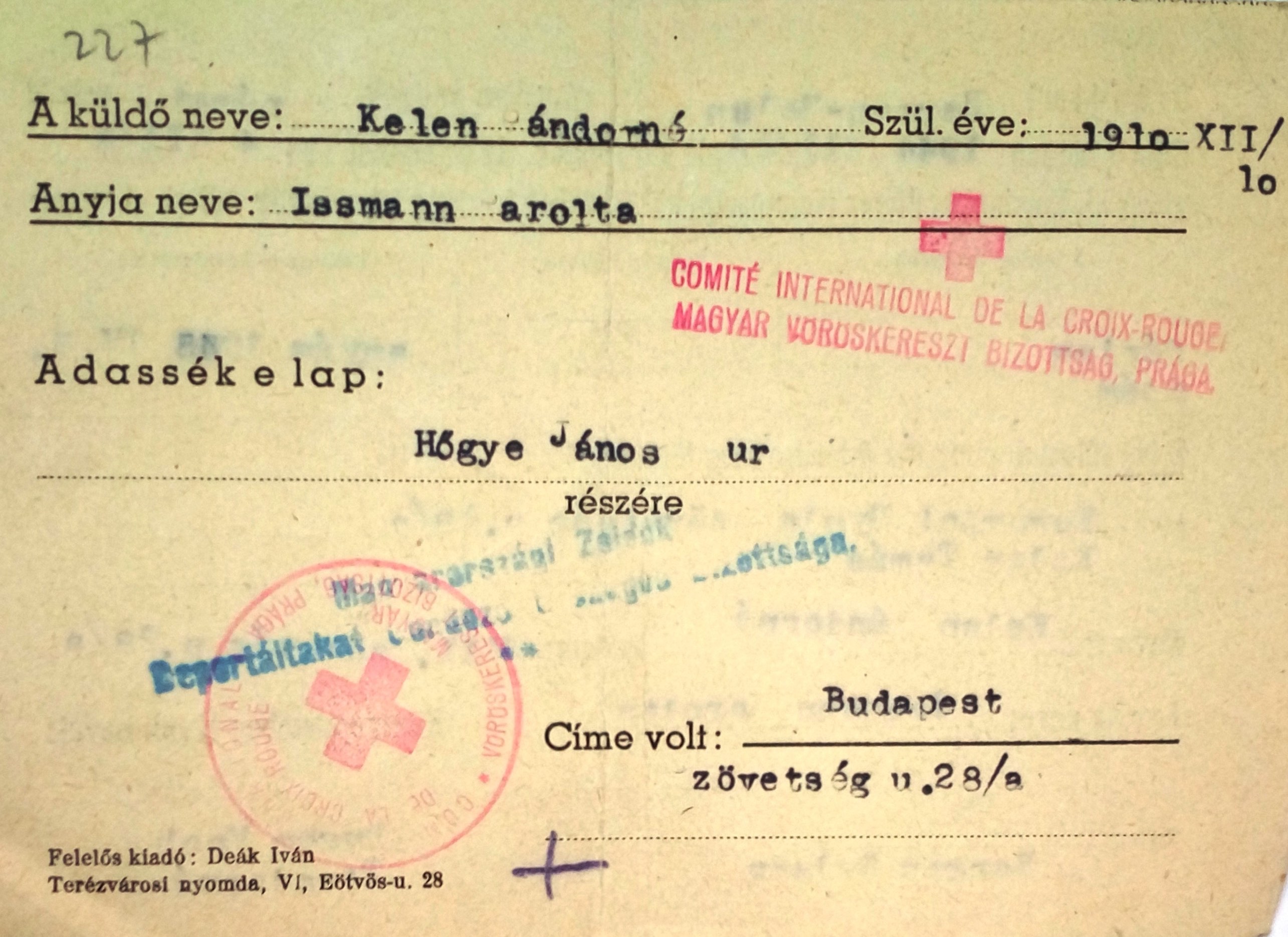
Deportees who crossed the border were either forced to build fortifications along the German-Hungarian border, or transported to various sites of the Nazi concentration camp system. Unlike in the summer, Germans refused to take people unfit to work and turned them back at the border. The destinations of transports sent directly from Budapest or from the border included Dachau, Buchenwald, Ravensbrück, Oranienburg-Sachsenhausen, Flossenbürg, Landsberg-Kaufering and Bergen-Belsen, as well as various subcamps. The gas chambers of Auschwitz-Birkenau had already been shut down, and the exploitation of labour became the primary goal. Despite the end of systematic mass murder, deportees perished en masse, due to inhuman conditions, lack of proper clothing and food and generally brutal treatment.Those who performed forced labour on the border, shared the same fate. Hundreds of them, who could no longer keep up with the work were murdered on site, including in Kőszeg and Rohonc/Rechnitz. The forced labourers were sent on further death marches through the Alps to Mauthausen and Günskirchen. Survivors were liberated by Allied troops in April-May 1945.
Bibliography
Braham, Randolph L., ed. The Destruction of Hungarian Jewry: A Documentary Account. 2 vols. New York: Pro Arte for the World Federation of Hungarian Jews, 1963.
Braham Randolph L., The Politics of Genocide: The Holocaust in Hungary. 2 vols. 2nd rev. ed. New York: Columbia University Press, 1994.
Zoltán Vági, László Csősz and Gábor Kádár, The Holocaust in Hungary. Evolution of a Genocide. Lanham, MD–Washington, DC: AltaMira Press–USHMM, 2013.
Zoltán Vági and Gábor Kádár, Self-financing Genocide: The Gold Train, the Becher Case and the Wealth of Hungarian Jews. Budapest: Central European University Press, 2004.
Tschuy, Theo, Dangerous Diplomacy: The Story of Carl Lutz, Rescuer of 62,000 Hungarian Jews. Grand Rapids: Eerdmans, 2000.
***
Translation of the documents: Gergő Paukovics and László Csősz, Hungarian National Archives
Special thanks go to Wolfgang Schellenbacher (Jewish Museum in Prague) for his invaluable contribution to the editing process. I am grateful to my colleagues, Anita Kiss (Hungarian National Archives), Etelka Baji and Judit Gaskó (Hungarian National Museum), Gábor Prinner (Hungarian Jewish Archives), Heléna Huhák, András Szécsényi and Márta Sándor (Holocaust Memorial Center), who provided vital assistance in obtaining the documents featured in this blog post.
© Photo: courtesy of Hungarian National Museum Historical Photo Department (MNM TF 65.587)
***
Judith Haran
Thanks for taking the time to put this story together, and to create that incredible map. This astonishing story is not that well known. The English version of wikipedia allots only one vague sentence to this event, in their otherwise lengthy article, “History of the Jews in Hungary”. In addition to your list of sources, I’d just like to add one from Yad Vashem Studies, Vol 28,, a detailed, well footnoted history entitled “The Death Marches of Hungarian Jews Through Austria in the Spring of 1945”, written by Eleonore Lappin: http://www.yadvashem.org/odot_pdf/Microsoft%20Word%20-%203218.pdf –
It was published 18 years ago, and the online version is translated from a German original.
I followed the link to look at Miklos Radnoti’s poetry; his notebook survived twenty months in that mass grave. Here is one of his poems that I copied out for anyone who is interested:
Razglednica (4)
I fell beside him; his body turned over,
already taut as a string about to snap.
Shot in the back of the neck. That’s how you too will end,
I whispered to myself; just lie quietly.
Patience now flowers into death.
Der springt noch auf, a voice said above me.
On my ear, blood dried, mixed with filth.
31 October 1944
The website states “By the end of October Radnóti grew completely weak. He was shot on the nape together with twenty-one of his physically and psychically broken companions on 4 November 1944 at the outskirts of Abda, near to the city of Győr.”
Laszlo Csosz
Dear Judith,
Thank you very much for your comment and the detailed additions. Dr. Lappin-Eppel’s well-elaborated account and my contribution are actually two parts of the same story. There is an error in the description about Radnóti: the author on the website of the Library of the Hungarian Academy of Sciences apparently intended to write “his physically and mentally broken companions”.
Mary Farkas
My Jewish father was taken to the O’Buda brickwork to be taken on this forced March towards Esztergom. He miraculously escaped, unbeknownst to my Christian mother who took a train, from B’pest to Pilistabor, then walked to Piliscsaba looking for my father. She writes: “We followed the tracks for a little while longer then crossed the wet untilled field fields to the highway, hiking for about 15 km until we got to Piliscsaba. We didn’t see a single soul on foot only German trucks racing towards Buda. By the time we got to the village it was past midday and I was tired. I told my companion that it would be good to hire a cart to get to Dorog…. by the time we reached the other end of the village a man with a horse drawn cart caught up with us. ….he agreed to take us Dorog for 10 pengos. There were no seats so we hunkered down in the bottom. About 500 meters further on we saw a column of deportees. We sat on the muddy edge of the cart watching the exhausted, rain soaked, hungry, sleep-deprived people trudging along. Old women, young girls, pregnant women, old men, strong young boys and men dragging themselves on their long, long Calvary to an unknown fate. It was a wretched sight, heart wrenching pale faces stared at us as we called the names of the people we were looking for. They begged us to let them get on; they had been on the move since Friday and couldn’t go on. We stopped to pick up old women who were on their last leg, their ashen faces crumpled from fatigue. They didn’t have enough strength to clamber up onto the cart. The younger ones helped them and they remained motionless on top of each other limbs next to us….We were progressing faster but the deportees’ column did not end during the 12 km section of the road.”
She witnessed too the “tired, hungry, sleepy, shattered women” who had been herded onto the soccer field.